The Google Nexus 9 Review
by Joshua Ho & Ryan Smith on February 4, 2015 8:00 AM EST- Posted in
- Tablets
- HTC
- Project Denver
- Android
- Mobile
- NVIDIA
- Nexus 9
- Lollipop
- Android 5.0
GPU Performance
While Denver is new, the Kepler GPU in the Tegra K1 is mostly a known quantity by now. In the Nexus 9, the GPU is still a single SMX clocked to 852 MHz. In order to verify performance, we turn to our standard test suite. For the most part, our GPU-bound tests are meant to represent gaming performance although tests like 3DMark can have CPU-bound aspects while GFXBench tends towards being a pure GPU test.
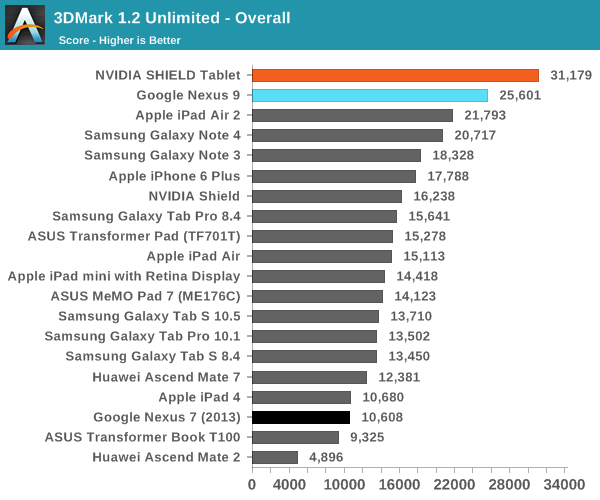
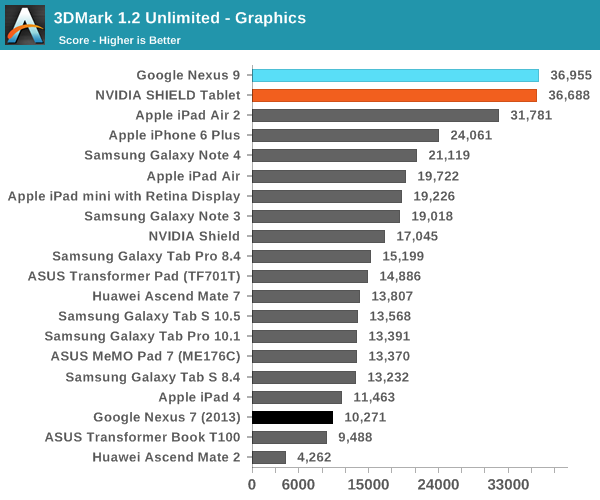
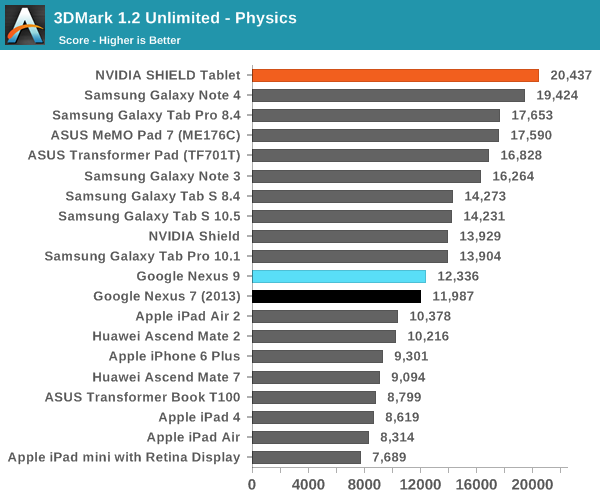

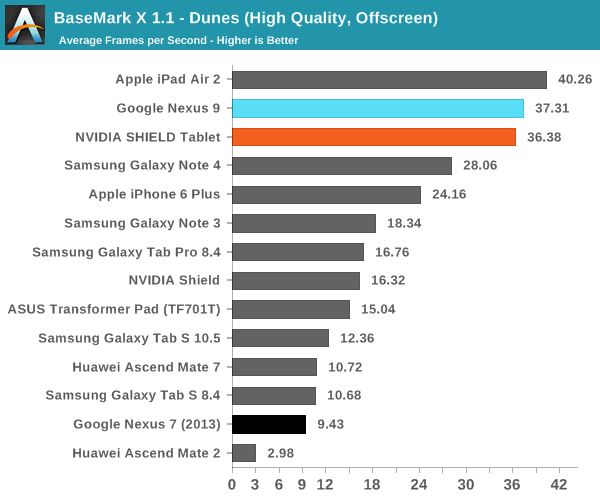
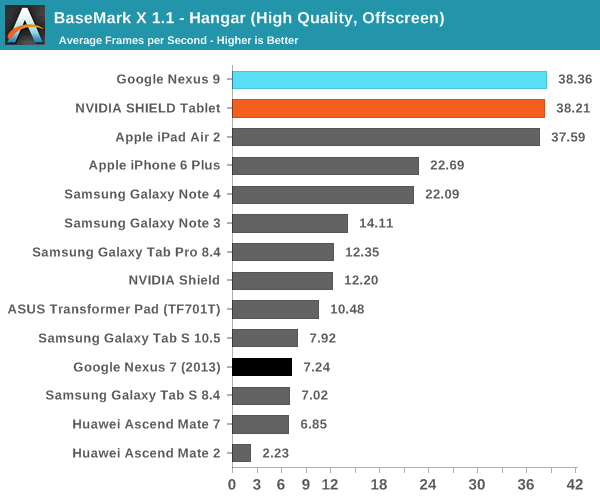
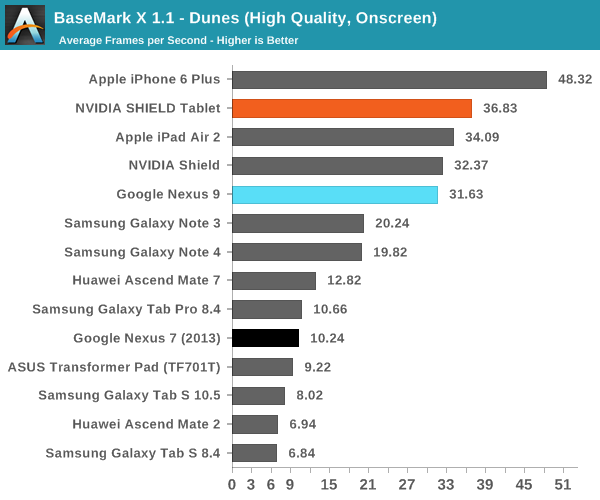
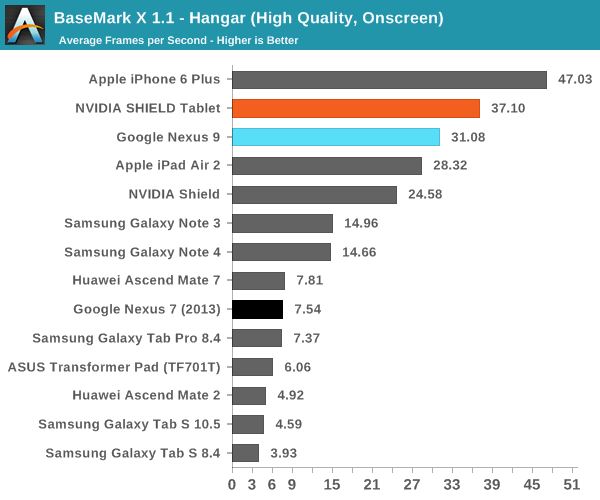
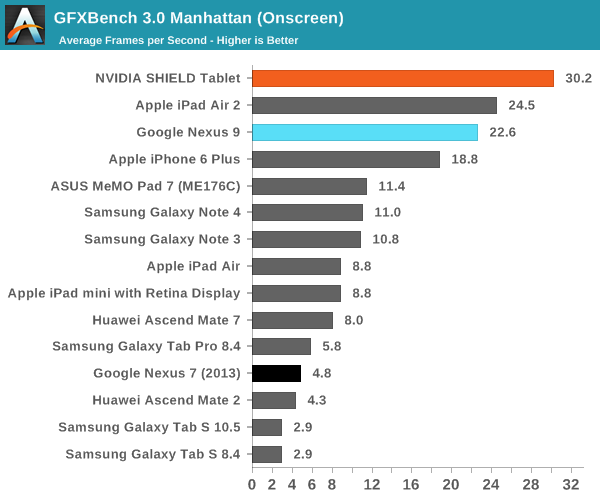
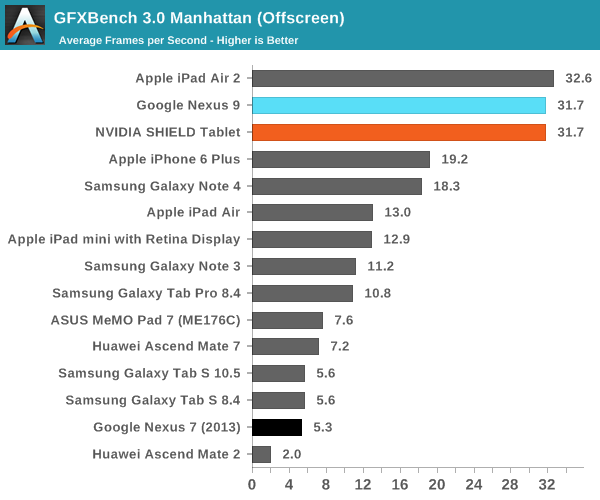

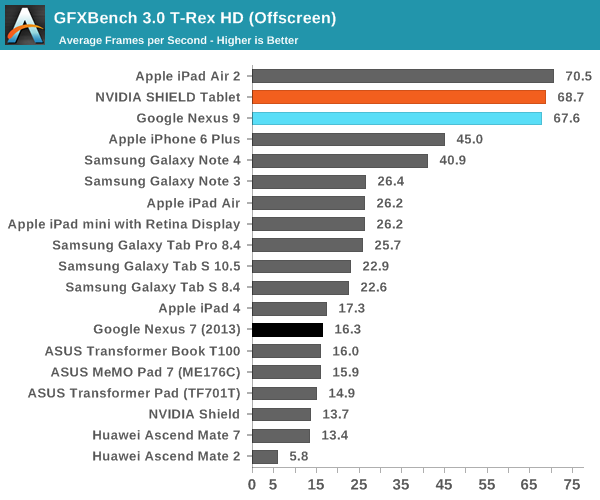
The Nexus 9's GPU has effectively identical performance to what we saw in the SHIELD Tablet, which means that the Nexus 9 should be able to support a broad range of games without performance issues. There is a bit of a noticeable performance delta when comparing on-screen performance, but this is simply due to the higher resolution of the Nexus 9's display. The one notable exception is the 3DMark physics test, which seems to scale with core count quite well, and that causes Denver to fall slightly short of the quad A15 configuration.
NAND Performance
While storage performance can often be secondary to a smooth user experience, poor storage performance is extremely painful. This is similar to RAM, where the difference between 2 and 3 GB is generally academic, while the difference between 512MB and 1 GB is enormous. While there have been some issues with Androbench with the move to Android 5.0, it seems that the timer issues have since been resolved, so it's possible to resume using the results from Androbench to get a rough idea of NAND performance.
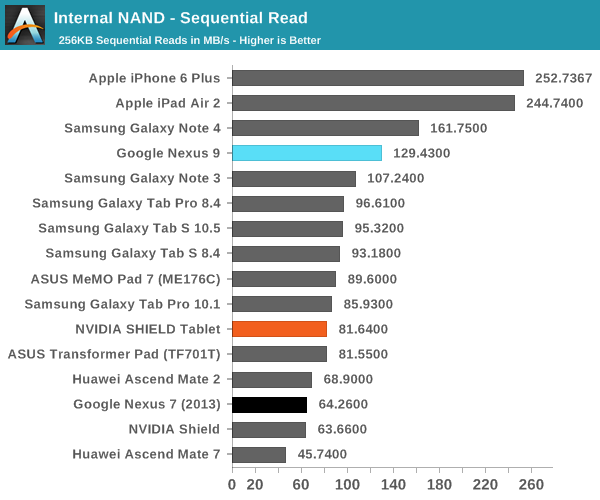
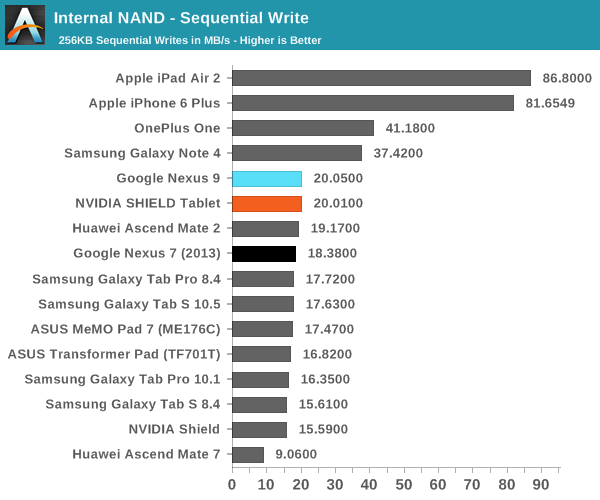

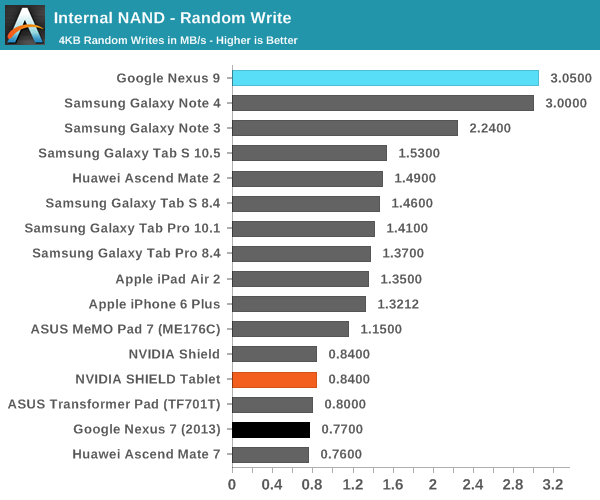
Here the Nexus 9 doesn't suffer nearly as much from full disk encryption that is forcibly enabled on the device; performance is noticeably higher than what we see in the Nexus 6. This seems to lend some credence to the theory that CPUs with ARM v8 ISA would be better suited to handling the need to encrypt and decrypt storage in real time. I tested the Nexus 9 with a custom kernel without full disk encryption to see how Androbench scores might change, but this didn't have a noticeable impact which seems to back this theory, although I'm still not confident that FDE is a good idea to enforce across all new devices.
The NAND itself, a Samsung eMMC package designated by the name BWBC3R, seems to be quite performant outside of pure sequential access, which seems to suggest that HTC hasn't skimped out in this area at all, and the use of F2FS is responsible for some of the best random I/O scores in any mobile devices we've tested thus far.










169 Comments
View All Comments
Mondozai - Wednesday, February 4, 2015 - link
No offence but how relevant is this review so many months after release?You guys dropped the ball on this one. We're also still waiting for the GTX 960 review.
What has happened to Anandtech...
LocutusEstBorg - Wednesday, February 4, 2015 - link
There's no Anand.nathanddrews - Wednesday, February 4, 2015 - link
That's the only change I've noticed.Morawka - Wednesday, February 4, 2015 - link
and no Brian Klugnathanddrews - Wednesday, February 4, 2015 - link
Yeah, but that was earlier.Ryan Smith - Wednesday, February 4, 2015 - link
"What has happened to Anandtech..."Nothing has happened to AnandTech. We're still here and working away at new articles.=)
However this article fell victim to bad timing. The short story is that I was out sick for almost 2 weeks in December, which meant this got backed up into the mess that is the holidays and CES.
As for how relevant it is, it is still Google's premiere large format tablet and the only shipping Denver device, both of which make it a very interesting product.
Jon Tseng - Wednesday, February 4, 2015 - link
It's fine to be late (although maybe not as late as the Razer Blade 2014 review!). Better to have late, differentiated content than early, commoditised content. Whether the review like's the colour of a tablet's trim is of limited interest for me; the details of Denver code-morphing are.Actually my worry is that under new ownership Anandtech might be pushed to go down the publish early/get click views route vs. the publish late/actually deliver something useful. Hopefully it won't come to this, but this is what historically happens... :-(
Operandi - Thursday, February 5, 2015 - link
Being there on day one is not a huge deal but its certainly not ok be as late as this review is or the still MIA 960 review. If you are going to be late you better be brining something new to the table to justify not being there in the same time frame as your peers. This is so laughably late its almost embarrassing to release it at all at this point.Tech journalism like most other markets is competitive and there are lots of other very competent publications out there competing for the same readers. Personally I've already gotten all the Nexus 9 information elsewhere so this review is of no value to me whatsoever. The same goes for the 960 review when/if that review ever shows up.
akdj - Wednesday, February 11, 2015 - link
Not sure where you've seen such an extensive write up and dissection of Denver, but I certainky haven't. Nor were the N9/6 widely available until the holidays were over. Like a month agoFor every 10,000,000 iPads produced, HTC is probably knocking out 10,000
Excellent review, write up and information about the 'other 64bit' option.
Taneli - Wednesday, February 4, 2015 - link
Timing is secondary for a deeply technical article like this here. You guys did exactly the right thing, reporting when the device was announced and waited for the review to be done before publishing. Also, having people out sick in a small team is something you really can't do that much about. I hope you're well now.The article itself was superb. Thanks for the read and keep up the good work.